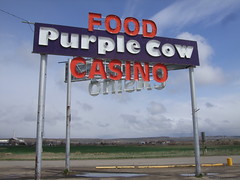 I have written previously about the strength of social media’s weak ties, but I would like to also broaden this discussion into a conversation about the particulars of personal influence, about social judgement and about the way in which the nature of influence and trust is transforming the way that we interact and engage with brands and the people behind them.
I have written previously about the strength of social media’s weak ties, but I would like to also broaden this discussion into a conversation about the particulars of personal influence, about social judgement and about the way in which the nature of influence and trust is transforming the way that we interact and engage with brands and the people behind them.
Clearly we are all comfortable working with convenient fictions – we regularly invent stories and work within “roles” to allow us to behave as if the world we live in is anything other than chaos. Think about the roles that we take on as parents, lovers, soccer players, good girls, bad boys (and thousands of others). Think about the way these overlap and how we switch between them on-demand. But we are not made up of these roles – they do not define us.
Now, think for a moment about our roles as marketers. We:
- Superimpose definitions on the “audience”
- Harangue these audience “members” with questions about their intentions, preferences or past choices
- Interrogate the resulting sea of half-mumbled data for insight
- Transform this insight into something resembling strategy
 The problem is, that the further we get away from the initial impulse – that is, to understand the complex way that we humans behave – the weaker the signal becomes. We subject this weak signal to repeated bouts of interpretation and analysis. We box it and strain it through frameworks and end up, somewhere down the line with a profile which we are comfortable to work with.
The problem is, that the further we get away from the initial impulse – that is, to understand the complex way that we humans behave – the weaker the signal becomes. We subject this weak signal to repeated bouts of interpretation and analysis. We box it and strain it through frameworks and end up, somewhere down the line with a profile which we are comfortable to work with.
Now, before you fire up the Bunsen burner, I must hold up my hand to these very same crimes. But there is a deeper, more fundamental error that lies at the heart of this problem – and that is that we have convinced ourselves that we need to think big. We need to think on a mass scale. And we need a BIG idea to match.
My view is that this is also a convenient fiction, for all we need is to understand the nature of influence and tailor our marketing efforts accordingly. How does this work?
Seth Godin suggests that marketers are either scientists or artists, and that we change hats according to the situation. It is this shifting that we must become comfortable with – we need to analytically identify those people whose behaviours match the profile of our products or services and then creatively engage these folks with a range of communications and experiences that generate the type of behaviour that, for us, constitutes success.
Notice the words “range of communications and experiences”.
As Joseph Grenny, David Maxfield and Andrew Shimberg explain in the MITsloan article How to Have Influence:
If you want to confront persistent problem behavior, you need to combine multiple influences into an overwhelming strategy. In management and in their personal lives, influencers succeed where others fail because they “overdetermine” success.1 Instead of looking for the minimum it will take to accomplish a change, they combine a critical mass of different kinds of influence strategies.
Our challenge is to influence the influencers. This is where the FOOTPRINT part of your digital strategy comes into play. After all, we are not always on the same online networks at the same time. And we don’t all listen to, or interact with, the same people, sites or networks. Furthermore, we also play different roles in different spaces. One person might have a substantial network on LinkedIn, yet have only a small number of followers on Twitter. Another may have thousands of blog subscribers but only half a dozen Facebook friends.
It is only by understanding the granularity of influence in this way that you can craft the different kinds of influence strategies that will deliver your outcomes. And this means throwing out the convenient fictions and embracing complexity and chaos. But it also means focusing in on real people. Find a way to make their influence valuable and you will create the type of win-win situations that social media has always promised.





